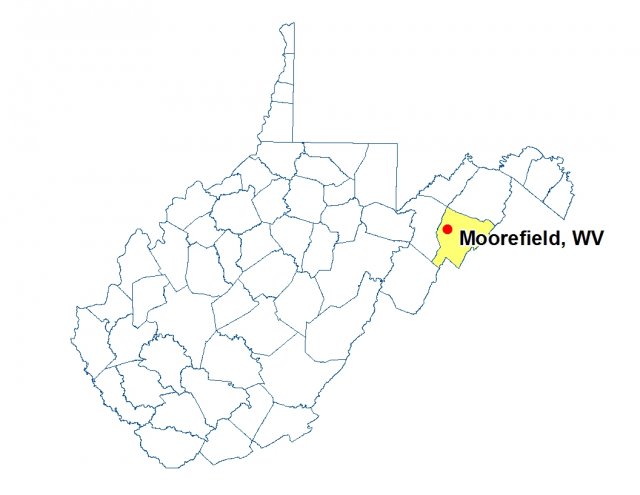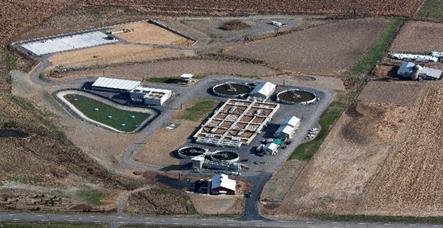New Plant Tops Projections for Reducing Pollution to Bay, Local Waters
Stories of Progress in Achieving Healthy Waters
U.S. EPA Region 3 Water Protection Division
Moorefield, West Virginia • September 24, 2015
A new wastewater treatment plant in West Virginia, considered a key to meeting the state’s commitment to help restore the Chesapeake Bay, is exceeding expectations for pollution reduction.
The Moorefield Regional Wastewater Treatment Plant is well below its discharge permit limits for nitrogen and phosphorus as it approaches the end of its annual monitoring period, according to Lucas Gagnon, president of the Moorefield/Hardy County Wastewater Authority.
The plant is contributing to the overall success of the wastewater sector in employing advanced treatment processes to reduce pollution to the Chesapeake Bay and local rivers and streams. The Moorefield plant is expected to remove more than 90,000 pounds of nitrogen and 93,000 pounds of phosphorus from West Virginia wastewater each year, accounting for a sizeable portion of the total nutrient reductions projected in the state’s Bay restoration plans. The plant replaced four older ones that would have needed costly upgrades, including two operated by poultry giant, Pilgrim’s Pride, a nearby major employer.
EPA provided a bulk of the funding for the $40 million project - $18 million from the Clean Water State Revolving Fund (through the West Virginia State Revolving Fund) and a grant of $5.5 million.
The Moorefield plant discharges to the South Branch of the Potomac River, a tributary of the Chesapeake Bay and a popular fishing and recreational resource. In a Bay Program video, Gagnon says that while local residents appreciate the need to reduce nutrients in the Bay, “the biggest benefit” is closer to home with a “cleaner, better river to enjoy.”
While monitoring of stream health is underway, “there’s an obvious impact of having a discharge as clean as or cleaner than the river,” said Mike Warwick, an engineer for the West Virginia Department of Environmental Protection (WVDEP). “That wasn’t the case for the past 30 to 40 years. There will be a huge benefit.”
When the plant opened in November 2013, there was an adjustment period in knocking down phosphorus levels. “It took a while for the biological phosphorus bugs to circulate through the plant and get to work,” Gagnon said. But once they took hold, the numbers have been impressive.
With four months to go in the reporting year, the treatment plant has discharged 13,978 pounds of nitrogen – far short of its 51,431 pound annual limit, according to Gagnon. For phosphorus, the data indicates a discharge of 2,084 pounds, well under the plant’s 5,221 pound limit. “Between the quality of construction and the operation of the system, we couldn’t be happier,” said Warwick of the WVDEP.

-
New Plant Tops Projections for Reducing Pollution to Bay, Local Waters (pdf)
(619.69 KB, 09/24/2015)
A new wastewater treatment plant in West Virginia, considered a key to meeting the state’s commitment to help restore the Chesapeake Bay, is exceeding expectations for pollution reduction.

AT A GLANCE
-
The Moorefield Regional Wastewater Treatment Plant is far below its pollution discharge limits.
For additional information, contact:
Patti Schwenke
Office of Infrastructure and Assistance
U.S. Environmental Protection Agency
Region 3 Water Protection Division
1650 Arch Street
Philadelphia, PA 19103
[email protected]
Katheryn Emery
West Virginia Department of Environmental Protection
[email protected]
